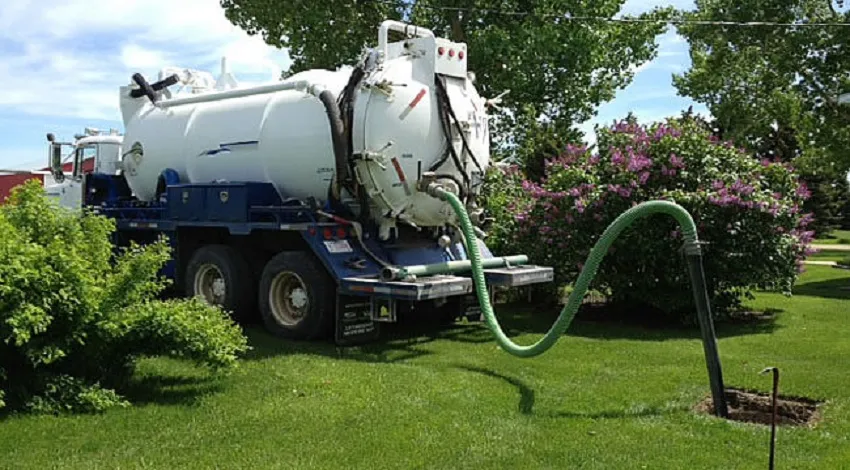
Tips for Maintaining a Healthy Septic System Between Pumpings
A septic system is a crucial part of many homes, responsible for managing wastewater efficiently. Regular septic tank pumping is essential to keep your system in good working condition, but there are also steps you can take to maintain a healthy septic system between pumpings. In this article, we’ll explore valuable tips and practices that can help you prolong the life of your septic system and avoid common problems.
Section 1: Understand Your Septic System
Before we dive into maintenance tips, it’s essential to have a basic understanding of how your septic system works.
1.1 Components of a Septic System
A typical septic system consists of two primary components:
- Septic Tank: This underground tank receives wastewater from your home. Inside the tank, solids settle at the bottom, while bacteria break down organic matter. The liquid wastewater exits the tank and enters the drain field.
- Drain Field (Leach Field): The drain field is where the liquid wastewater is further treated and dispersed into the soil, naturally filtering it before it returns to the environment.
Section 2: Tips for Maintaining a Healthy Septic System
2.1 Regular Pumping
The most critical aspect of septic system maintenance is regular pumping. Solids and scum accumulate in the septic tank over time, and if left unchecked, they can lead to system overload and damage. Consult with a professional septic service provider to determine the ideal pumping schedule based on your tank size, household size, and water usage.
2.2 Water Conservation
Conserving water is not only good for the environment but also for your septic system. Excessive water usage can overload the system and lead to more frequent pumpings. Be mindful of water usage by fixing leaky faucets and toilets and avoiding excessive laundry and long showers.
2.3 Proper Waste Disposal
Only dispose of appropriate materials down your drains and toilets. Avoid flushing non-biodegradable items like sanitary products, diapers, wipes, and grease. These items can clog your plumbing and septic system, leading to costly repairs.
2.4 Watch Your Drains
Be cautious about what goes down your drains. Excessive use of chemical drain cleaners can harm the beneficial bacteria in your septic tank. Consider using enzyme-based or septic-safe drain cleaners if necessary.
2.5 Septic Tank Additives
While not always necessary, some homeowners choose to use septic tank additives. These products contain beneficial bacteria that can aid in waste decomposition. Consult with a professional before using additives to ensure they are appropriate for your system.
2.6 Avoid Excessive Grease
Grease and fats should never be poured down the drain. They can solidify in the septic tank, causing clogs and reducing its efficiency. Instead, collect grease in a container and dispose of it in the trash.
2.7 Be Mindful of Landscaping
Avoid planting trees and shrubs near the drain field. The roots can infiltrate the system, causing damage. Consult with a professional landscaper to ensure proper landscaping around your septic system.
2.8 Install a Filter
Consider installing a septic tank effluent filter. This device helps prevent solids from entering the drain field and can extend the life of your system. Regularly clean and maintain the filter as recommended.
2.9 Inspect and Maintain the Plumbing
Regularly inspect and maintain your plumbing to prevent leaks and clogs. Leaky pipes can introduce excess water into the septic system, while clogs can disrupt the flow of wastewater.
2.10 Avoid Heavy Machinery
Avoid placing heavy machinery or vehicles over your septic system or drain field. The weight can compact the soil and damage the components of your system.
Section 3: Signs of Septic System Problems
Knowing the signs of septic system problems can help you address issues promptly and avoid major repairs. Be on the lookout for the following signs:
- Foul Odors: Unpleasant odors in or around your home can indicate septic system issues.
- Slow Drains: If sinks, toilets, or showers drain slowly, it may be a sign of a full septic tank or clogged plumbing.
- Pooling Water: Puddles or soggy areas in your yard near the drain field can signal a problem.
- Backup: The most obvious sign is sewage backup in your home. If you experience toilets or drains backing up, it’s a clear indication that your septic system needs attention.
Section 4: Regular Professional Inspections
In addition to regular pumping, it’s a good practice to have your septic system professionally inspected on occasion. A qualified septic service provider can assess the condition of your system, identify potential issues, and recommend necessary maintenance or repairs. Professional inspections can catch problems early, preventing costly and disruptive emergencies.
Conclusion
Maintaining a healthy septic system between pumpings is essential to the longevity and efficiency of your wastewater management. By following the tips outlined in this article, you can minimize the risk of problems, reduce the frequency of pumpings, and enjoy a trouble-free septic system for years to come.
Remember that proper septic system maintenance is an investment in your home’s value and the well-being of your family. By being mindful of your water usage, waste disposal, and regular inspections, you can ensure that your septic system operates at its best, providing efficient and environmentally friendly wastewater treatment.

